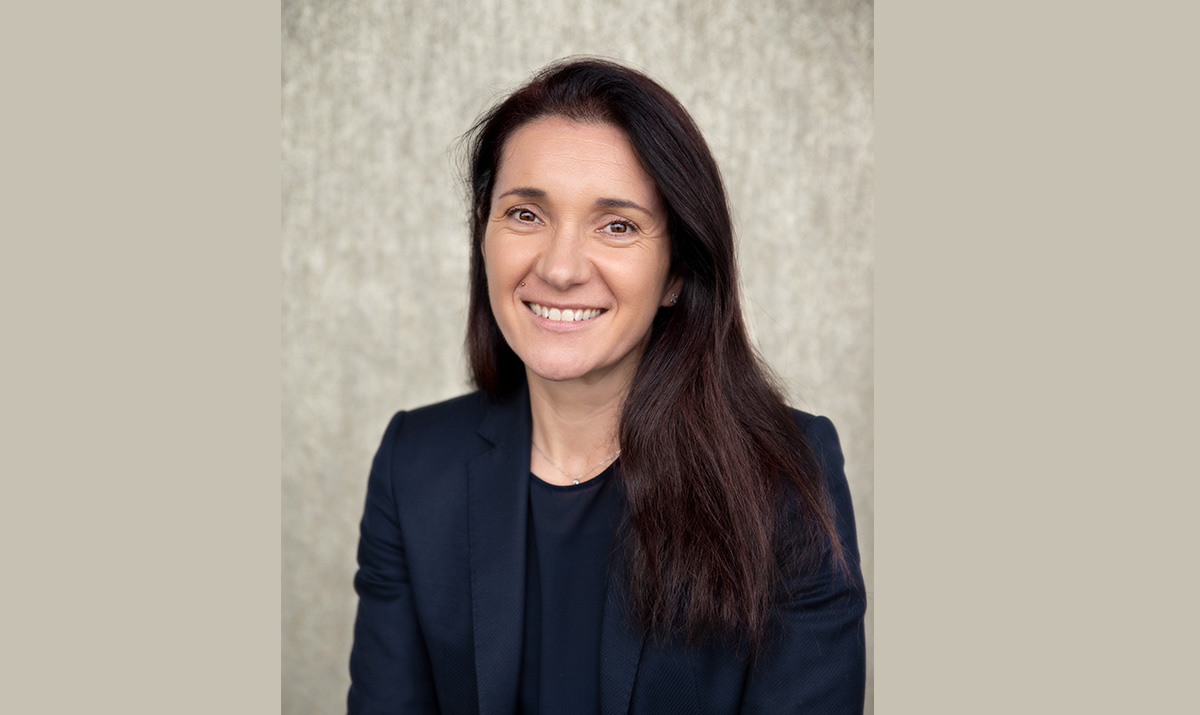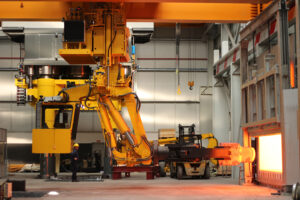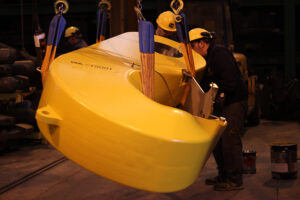
29 Apr Interview with Maria L. Irizar, Managing Director, Irizar Forge, The Basque Country
On June 16, 2023, Irizar Forge celebrated its centenary at the Basque Culinary Center, accompanied by members of the Royal Van Beest Group, the Irizar & Van Beest families, employees, local authorities, and friends of the business. How does the company leverage the rich history and tradition of these hundred years to inspire innovation? Are there specific plans to preserve and pass on the business legacy to future generations?
 Our anniversary was a significant milestone. It highlighted our history and gave us an opportunity to look back and remember where we came from, but also to look forward to the future. It is important to remember where we come from, and also to determine where we are going. We are finalizing our business plan for the coming 20 to 25 years and are already planning as far as 30 years ahead, keeping in mind the mission, vision, and values that have brought us this far. Not many companies reach 100 years of age, so we are making sure to adapt and roll with the times through careful strategic planning so that we will be around for another 100 years. Our corporate values include longer-term thinking, patience, delaying reward, and not prioritizing short-term goals. We also value all our employees at every level of the business. As an executive, my job is to ensure that everyone understands the mission and what we want to achieve in the next five years.
Our anniversary was a significant milestone. It highlighted our history and gave us an opportunity to look back and remember where we came from, but also to look forward to the future. It is important to remember where we come from, and also to determine where we are going. We are finalizing our business plan for the coming 20 to 25 years and are already planning as far as 30 years ahead, keeping in mind the mission, vision, and values that have brought us this far. Not many companies reach 100 years of age, so we are making sure to adapt and roll with the times through careful strategic planning so that we will be around for another 100 years. Our corporate values include longer-term thinking, patience, delaying reward, and not prioritizing short-term goals. We also value all our employees at every level of the business. As an executive, my job is to ensure that everyone understands the mission and what we want to achieve in the next five years.
What are Irizar Forge’s main areas of manufacturing, and what projects has the company been involved in, especially in the US?
For the past six years, we have been the manufacturing arm of the Dutch Van Beest Group. Long before that, our forge has been at the center of our business for 100 years. It is still going strong today, using a combination of traditional workmanship and modern technology, to produce recognized, high-quality components that meet Western safety standards. Our clients are crane manufacturers and operators, so we work in a very heavy-duty material-handling world where the quality and reliability of our products is paramount.
Irizar Forge’s experience with the demands of complex underwater installations led the company to develop the new Irizar Forge Sling Defender ROV eye hooks. How do these hooks address the challenges of this unique environment, and how will they impact the subsea services market in the future?
Over the past 20 years, we have been very focused on the offshore segment. For most of our history we have been catering to onshore needs, mostly in the form of the industrial cranes. As the cranes and their hooks got bigger, we have adapted and for the past 20 years we have been targeting the most heavy-duty niches where there is less competition. Much of this work is offshore, which we are now concentrating on. We have identified the manufacturers of the largest cranes, which are often attached to ships that used to work for the oil and gas industry. These days there are more and more renewable energy installations, particularly offshore wind power, which has diversified our client base away from oil and gas.
Any structure that is going to be assembled or installed offshore needs ship-mounted cranes. But renting these cranes and boats for long periods of time becomes very expensive, so as much assembly work as possible is done onshore at shipyard facilities. This gives offshore fabrication work an on-shore and an off-shore dimension, with ports and assembly vessels working together. As these projects and pre-assemblies get bigger, the relationship gets tighter, and the equipment, particularly the cranes, gets bigger. We have positioned ourselves to make sure that we can take on the largest, most heavy-duty projects and that our assets and skills are aligned to serve offshore operators.
Many of these installations are either built on the seabed or are tethered to it so that they do not float away with the tides. But there are more and more facilities that are not fixed to the seabed, but instead float on a series of mooring lines. This has become a new area of focus for us. As such, we are producing products for mooring and towing, as well as lifting and installation.
Irizar Forge has been committed to the environment for over 20 years, as shown by its ISO 14001 certification. Could you provide details on your “Green Forge” project and other plans to reduce your carbon footprint by 2030?
Over the past 20 years we have focused on waste management, under ISO 14001. Despite our modest size, we work with very large companies that expect us, as a part of their supply chain, to be at the forefront of environmental responsibility. The next 20 years will be focused on the priority of energy efficiency. To address the broad issue of energy consumption and to contribute to the transition from hydrocarbons to renewable energy, we are moving on to ISO 50001. Our factory heats steel to 1200 degrees, which consumes a lot of energy, so energy efficiency and resource management will become increasingly important for us. We have conducted a thorough assessment of our facilities’ energy consumption and have subsequently set ourselves the goal of reducing our energy consumption by 30%.
 In October 2023, Irizar Forge participated in the Global Offshore Wind Summit in Japan (GOWS) to present its capabilities and projects in the field of offshore wind under the joint brand Offshore Wind Basque Country. What was the impact and reception of Irizar Forge’s participation in this event?
In October 2023, Irizar Forge participated in the Global Offshore Wind Summit in Japan (GOWS) to present its capabilities and projects in the field of offshore wind under the joint brand Offshore Wind Basque Country. What was the impact and reception of Irizar Forge’s participation in this event?
Through our energy associations in the Basque Country, we are in direct contact with public administrations, and we align our work with that of the government. Last year the Basque government signed an agreement with the government of Fukushima, Japan, a region that, like the Basque Country, is drawing investment towards large offshore renewable energy projects. As an important hub with its own supply chain, the Basque Country can be a great partner for Japan, which stands to benefit from our suppliers, technologies, and know-how. We have received two delegations from Japan, we sent one in October, and the Basque Country has signed a strategic alliance with the president of the Fukushima region. Japan is targeting a big expansion of its offshore renewable facilities but does not have the production capacity to do it alone. Basque companies are there to support Japan in this endeavor.
Has Irizar Forge explored collaboration opportunities and possible projects in the offshore wind sector with companies in the US?
Yes. Through our associations, we are bringing the Basque and US business communities together to collaborate on shared objectives. These include plans to install non-floating, bottom-fixed platforms along the East coast. We will be involved in these developments in our twin capacities for both lifting and mooring.
What is your presence in the United States market?
In renewables, Europe is a little ahead of the US, which uses a lot of oil and gas from the Gulf of Mexico. Almost everything we sell is in this region, and we will be there as it prepares to develop its renewable energy potential over the next five years. We won’t see offshore wind farms by then, but hydrocarbons are finite, and the US will eventually need to add renewable energy to its energy mix.
We know that Irizar Forge stands out for its commitment to innovation. Could you share some specific examples of how the company has integrated new technologies into its manufacturing processes to improve the efficiency and quality of its products?
It is a little easier to introduce innovation at the manufacturing level than at the product level. Until now, the onshore market has been very conservative. But the offshore market, particularly renewables, has a much bigger appetite for innovation, even at product level. They care less about how we manufacture it, but also expect demonstrable sustainability practices to be built into the production process. The innovations we have made so far have been focused more on the process than the product. We were a heavy consumer of natural gas until three years ago, when we introduced induction. Electrifying the factory allows us to heat the product more quickly and more efficiently, and without burning gas.
What are the specific objectives of Irizar Forge in 2024-2025?
We have two key markets: North America and Brazil. Our presence in North America is based out of Van Beest’s sales offices in Houston. The Gulf of Mexico is very important to us, as is Canada as it focuses more and more on renewable energy. This year, 15% of our total turnover will come from renewable energy, and we hope that 25% of our sales will come from North America. We believe these two areas have the greatest potential for growth. Ours is a very nice market, where components like hooks must pass a very thorough security inspections every five years, and which often need to be replaced by new, more sophisticated, more compact ones. We are in the market of replacing components of large cranes, often on ships, to upgrade them to the highest standards of innovation.
What is your final message to USA Today readers?
In the last 20 years we have done great work in the US. Having a local team and stock has helped us grow in the market. Everything we do here is monitored, and we have a great relationship with local clients. As Europeans, we have had to Americanize ourselves to adapt to the local market and will be working on our US branding over the coming five years.
